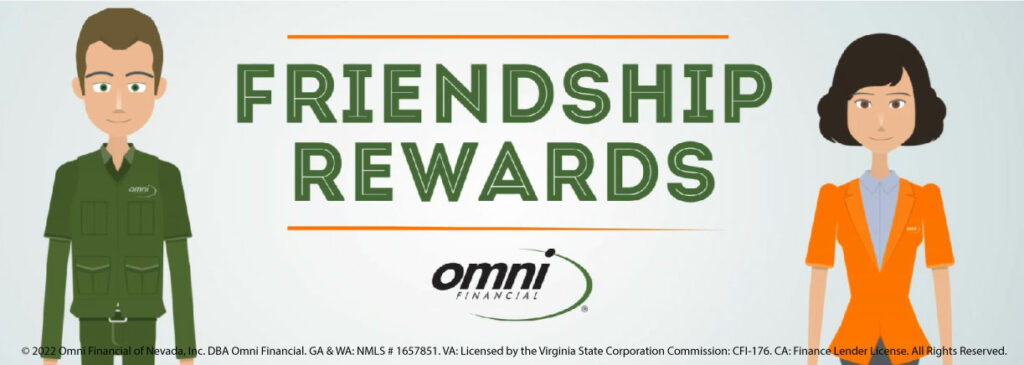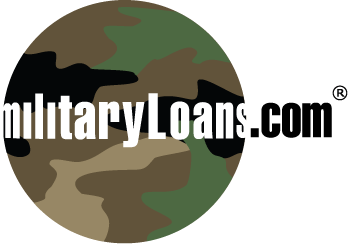The best investment that anyone can make is in themselves. So if attending college requires a student loan to cover the cost of tuition, that’s what you’re doing — you’re investing in your future and daring to become your best self, whether you intend to remain in the military on active duty or pursue other opportunities in another career.
The problem with student loan debt is the massive amount you can rack up, given how expensive it is to attend a four-year university. According to the Education Data Initiative, an undergraduate degree in the United States costs the average student more than $35,000 per year. That’s three times what the price was per student 20 years ago.
Given the fact that you have to pay a student loan back, student loan debt can seem like quite the albatross that stands in the way of reaching your financial aspirations more quickly.
But what if you could get your loan forgiven? As an active duty service member of the Navy, Air Force, Army, Coast Guard or Marine Corps, military loan forgiveness may be available to you, which could substantially cut your student loan debt.
If you’ve recently graduated from a college or university — or you’re thinking about attending and planning out how you’ll pay — this article will help you with the financial side of investing in your future through a high quality education.
What student loan and military loan forgiveness programs are available to you on active duty service?
As an active duty soldier, airman, sailor or Marine, you’re entitled to a number of great benefits that are unavailable to the average citizen. Several of these are related to student loan repayment programs. For instance, if you took out a student loan prior to signing up for the military, the interest rate you pay on that student loan is capped at 6% while on active duty through the Servicemembers Civil Relief Act Interest Rate program (SCRA). Alternatively, through the Military Service Deferment Program, you may be able to delay repayment during certain periods of active duty service or when you retire.
But for student loan forgiveness specifically, look no further than the Public Service Loan Forgiveness program. Given that what you do is a public service — serving your country — you may qualify for military loan forgiveness, depending on what student loan you chose or intend to take out.
Here are a few of the eligibility requirements, as specified by the U.S. Department of Education:
- Loan must be through the Federal Direct Loan Program.
- Must be an active duty service member or work on a full-time basis at a qualifying government or nonprofit public service organization.
- Submit an Employment Certification Form to your student loan servicer.
Additionally, loan forgiveness through this program typically also requires that you make a certain number of minimum payments and by their prescribed due dates. Many military members may be eligible for this program; they just don’t realize it or know about it. According to a report put together by the Government Accountability Office, at least 178,000 troops may be able to leverage this loan repayment solution, the Military Times reported. The Public Service Loan Forgiveness program has existed for over 10 years, yet only about 5,500 military members and civilians employed by the Department of Defense have applied for it, according to the GAO’s findings.
The vast majority of those who have applied for the program — over 90% — have been denied, but thanks to an easing of the rules regarding eligibility, hundreds of thousands of military and public services workers will now qualify for student loan forgiveness. The Department of Education estimates that over $2.8 billion in loan forgiveness is available.
“Borrowers who devote a decade of their lives to public service should be able to rely on the promise of Public Service Loan Forgiveness,” said Secretary of Education Miguel Cardona in a press release. “The system has not delivered on that promise to date, but that is about to change for many borrowers who have served their communities and their country.”
Another potential military loan forgiveness option is a program that factors repayment based on what you make in terms of salary. Income-driven repayment may make a lot of sense for you as a military member, as what you pay back each month to settle the student loan debt depends on what you earn. Naturally, if you have a lower salary, you won’t be required to come up with as much as you would under normal circumstances. After a certain number of years of consistent repayment — usually between 20 to 25 years — any balance that remains may be forgiven.
There are a few caveats to income-driven repayment plans, however. The biggest of them all is that they only apply to federal direct loans. Eligibility may also be influenced by when the loan was made. If this sounds like something for which you may qualify, consider contacting your current student loan servicer or the one you intend to borrow through. Remember, income-driven repayment is not offered by private lenders.
What other loan forgiveness options are available to active duty service members?
While the aforementioned loan forgiveness and repayment programs are for all active duty services members, there are some that are exclusive to specific military branches. Here are a few of them:
- Army Student Loan Repayment program
- Navy Student Loan Repayment program
- National Guard Student Loan Repayment program
- Air Force College Loan Repayment program
- Coast Guard Loan Repayment program
As with the aforementioned loan forgiveness and repayment programs, each of these has their own eligibility criteria and amounts that you can shave off of your student loan debt. They also have some similarities as well. For example, the Army Student Loan Repayment program forgives a maximum of $65,000, and the loan forgiveness ceiling for the Navy Student Loan Repayment program is $65,000 as well. It’s paid in three payments over the sailor’s first three years.
Whereas the repayments are available through the Army after your first full year as a soldier, qualification for loan forgiveness in the Navy hinges on a minimum four year active duty service commitment.
The specifics on the Air Force College Loan Repayment program are similar to both the Navy’s and the Army’s programs. Like the Army, the Air Force issues to military personnel the tuition repayment amount they’re qualified to receive after their first year of service. And like the Navy, the cap on loan forgiveness maxes out at $10,000. The loan forgiveness cap for the Coast Guard, meanwhile, is $30,000, but only for those who sign on to the Coast Guard for at least three years with no more than $10,000 going toward forgiveness after their first year of enlistment.
The most generous of all the repayment programs is the one offered by the National Guard. The tuition repayment maximum is $50,000. But where much is given, much is expected. Not only must those seeking this benefit complete a Armed Services Vocational Aptitude Battery assessment — and score a minimum of 50 — they also have to enlist in the National Guard for six years.
There are several other eligibility criteria, so you’ll want to speak to your recruiter or superior officer to get more of the details about each.
What alternative solutions are available if military loan forgiveness is not an option?
Since there are eligibility requirements, that naturally means that not everyone will be able to take advantage of any of these loan repayment or forgiveness options. But you still have alternative solutions in this low-interest rate environment. Instead of loan forgiveness, you may want to see if you can get your student loan refinanced. By refinancing, you can reduce how much you spend in monthly payments on your student loan by virtue of a private lender offering a lower interest rate by issuing you a new loan with the adjusted rate of interest. Unlike with military loan forgiveness — which is only available to active duty service members with a federal direct loan — refinancing is possible with either a federal or private loan.
At the same time, though, refinancing does come with certain drawbacks. This includes no longer being eligible for the income-driven repayment program and the Public Service Loan Forgiveness program. Additionally, depending on what your interest rate was when you initially became a federal student loan borrower, the savings you receive by refinancing may not be substantial enough to bother trying.
The best path forward is to do your research and review all of your options before deciding on one.
We may not offer student loans at Omni Financial, nor do we have any sway in which military members can get their student loan debt forgiven. But what we do offer is fast money when you need cash quickly. Wherever you may be and for whatever reason you need it, military loans can supply you with the funds to cover a payment or resolve credit card debt. We also offer free online courses to enhance your financial literacy and money management. Contact us today to learn more and sign up for our newsletter as an Omni insider.
The information provided in this blog post is for informational purposes only. It should not be considered legal or financial advice. You should consult with a financial professional to determine what may be best for your individual needs.

Friendship Rewards Program
Refer a friend and get a $25 Omni Gift Card








